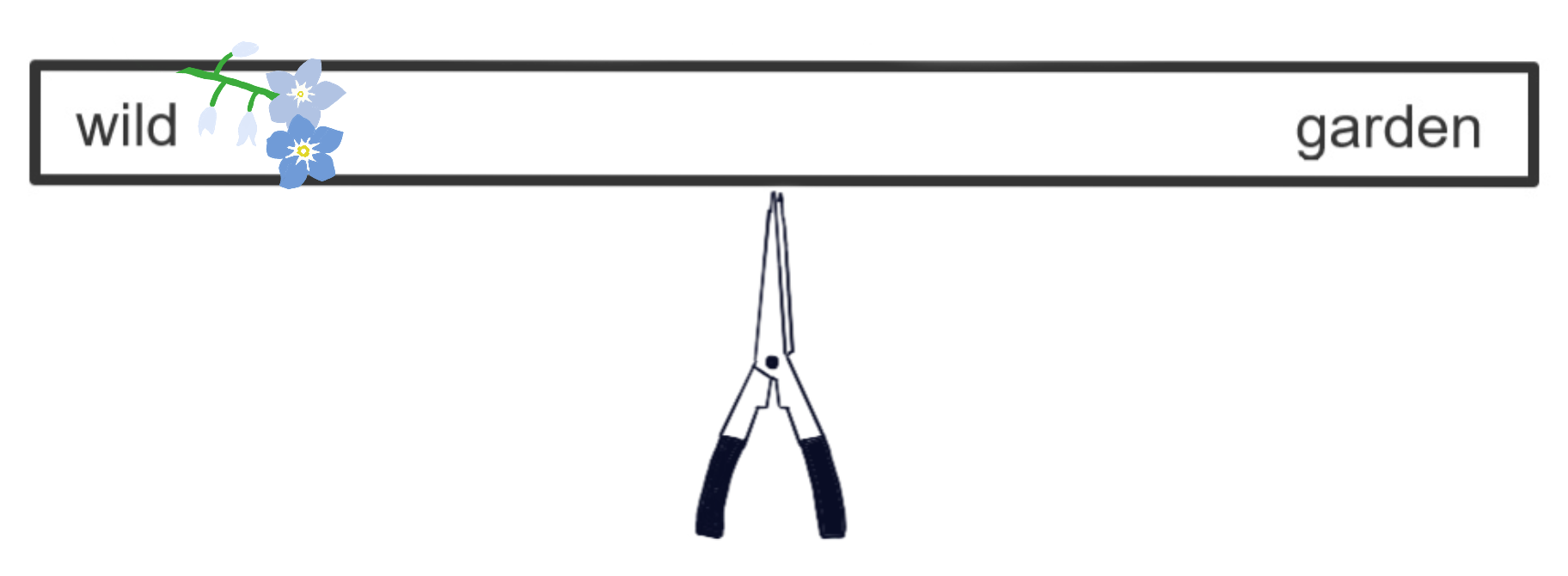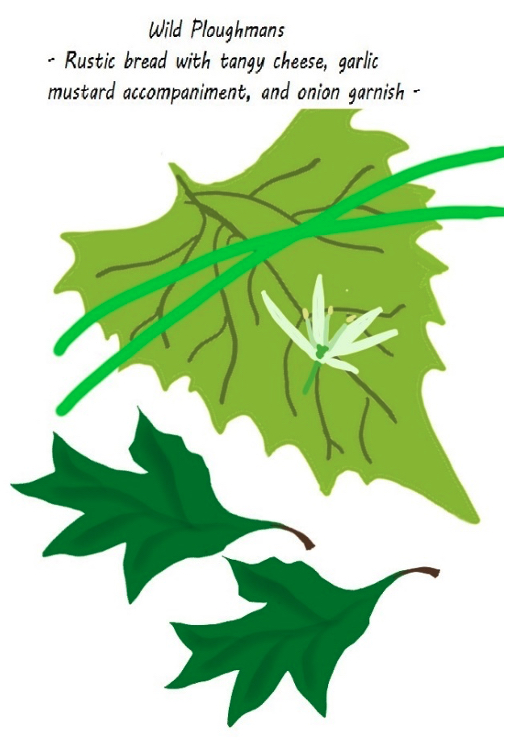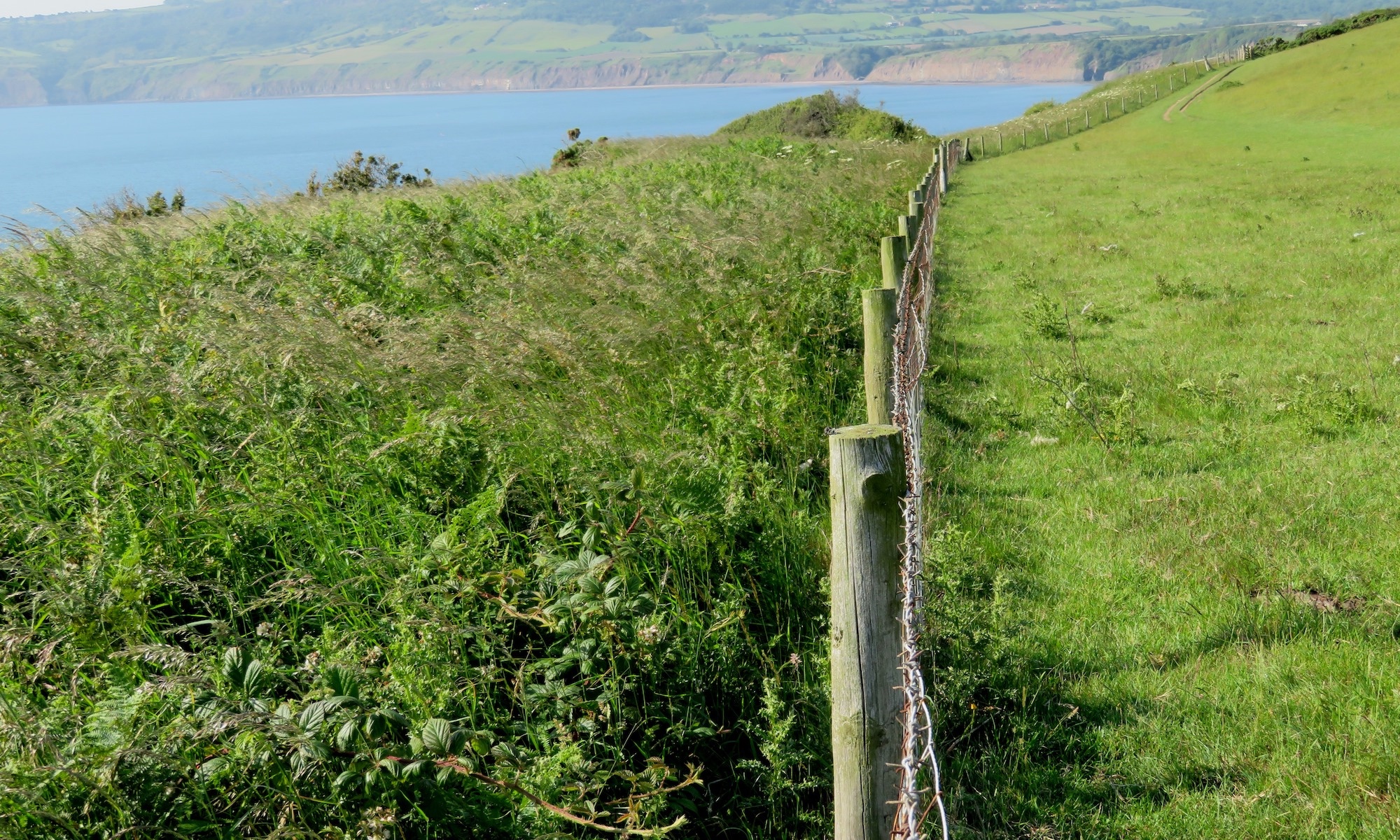by Rachel
24th July, 2021

The season of wild eating is well underway! I remind myself of this as I peer through to parts of my garden that have become towering and inaccessible blurs of green and wonder vaguely about getting the shears out.
Thinking instead of how these wilder parts of the garden represent an opportunity, I remember that even the most ubiquitous of grasses are food plants, such as Yorkshire fog and cocksfoot favoured by the small skipper butterfly; that later in the year those taller-than-me teasels will feed first insects, then finches (and get up close – those green flower heads have a stunning sculptural quality!); and that the garlic mustard and common sorrel leaves will feed my son…
…it’s my fault; when he was little I told him that I used to eat young hawthorn leaves which my grandad called ‘bread and cheese’ , then watched as, goat-like, he nibbled on hedges as he went down the garden. It has become necessary to get him books on wild eating to avoid any mishaps, from which we have also learnt that the seeds of pendulous sedge (Carex pendula) are edible, the leaves and seeds of good-old cleavers (Galium aparine) can be eaten (no thanks). I also smiled when, at a recent bioblitz in Otley, I saw a young lad casually picking and eating bramble leaves (not just us then). I suggest you too get some good books and advice if you’re interested. Our nearby riverbank also has a plentiful supply of elder – from which we make elderflower cordial, and is also a source of my son’s favourite tease – to breathe onion fumes on me from ramson flowers.

For me though, our cultivated food plants are more appealing, if not always as successful – we’ve had a great haul of gooseberries already, making up for the rhubarb which has been the usual dismal failure – clearly we don’t live close enough to the rhubarb triangle, as we seem to manage 2 sticks per year, and those triangle edges must be very close by as a house up the road has rhubarb literally growing out of the driveway.
The black-currant bush also looks likely to yield a heavy crop this year, but not the red and white currants which the blackbirds and thrushes favour – though I refuse to net the bushes. An early gardening memory, that still hangs heavy in my heart, is when having netted the currants for our first decent crop, as advised in most gardening books, we came home from a weekend away to find we had accidentally trapped and caused the death of a beautiful song thrush. Ever since then we just let the birds help themselves – though admittedly I will watch like a hawk when it’s close to harvest time and sometimes make do with not quite-perfectly-ripe fruit in order to get my fair share.
The other benefit of allowing free access to the currants is that of pest control – I have watched blue tits, sparrows and wrens picking off aphids that can otherwise cause blistering and distorted growth. In recent years we’ve also benefited from the services of some other unlikely employees – grey squirrels have been enthusiastically helping to thin out our eating apple crop, which would otherwise have given masses of small fruit. I’m not sure we quite have the balance right on this one – the tree is looking a little sparse right now, but leaving the squirrels to it beats thinning by hand – or running out every five minutes, waving arms and shouting at the sky.

